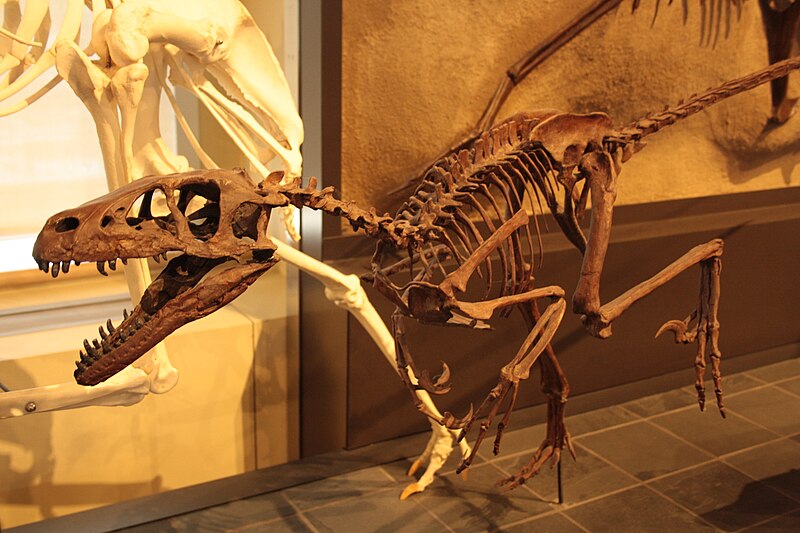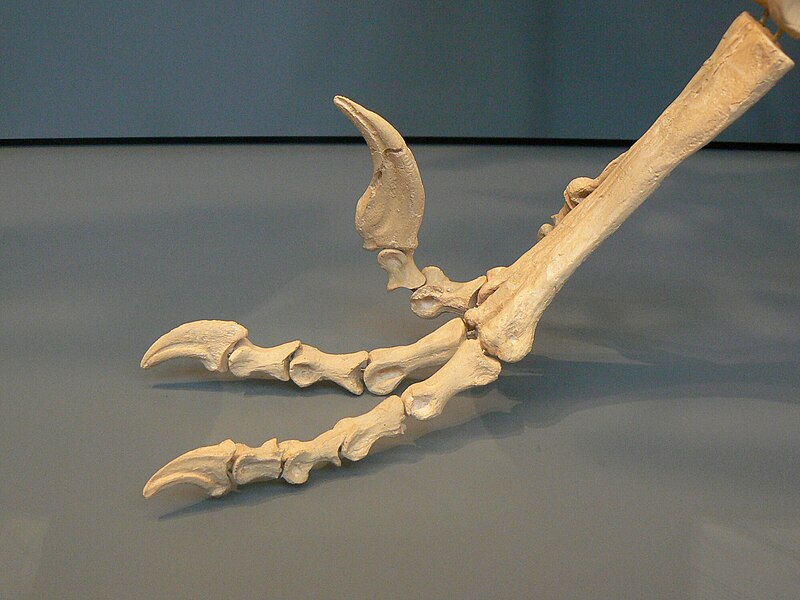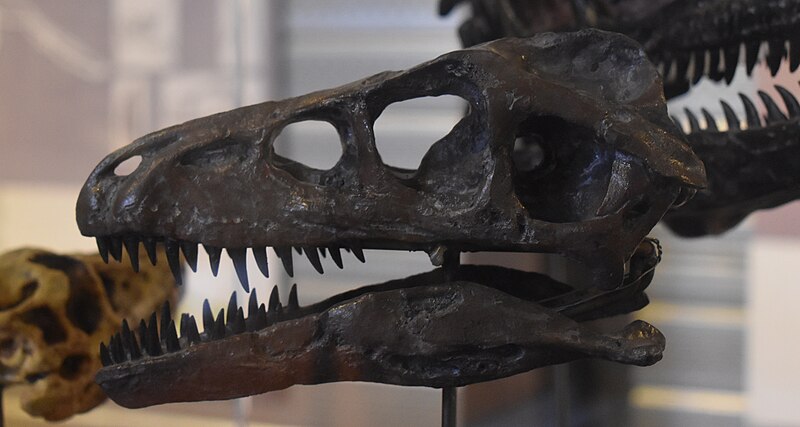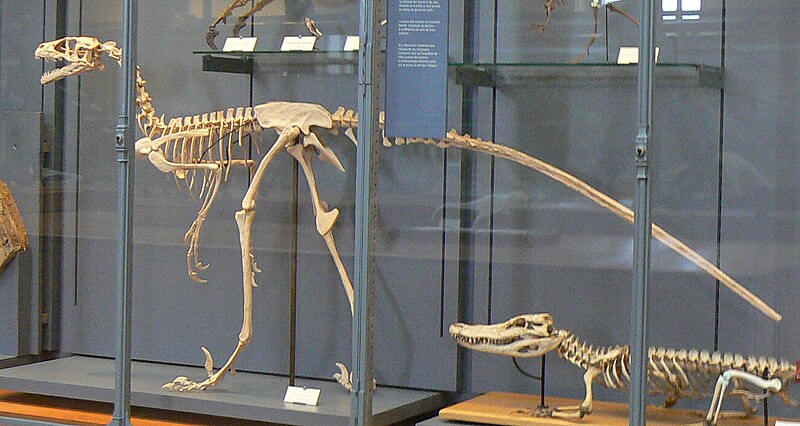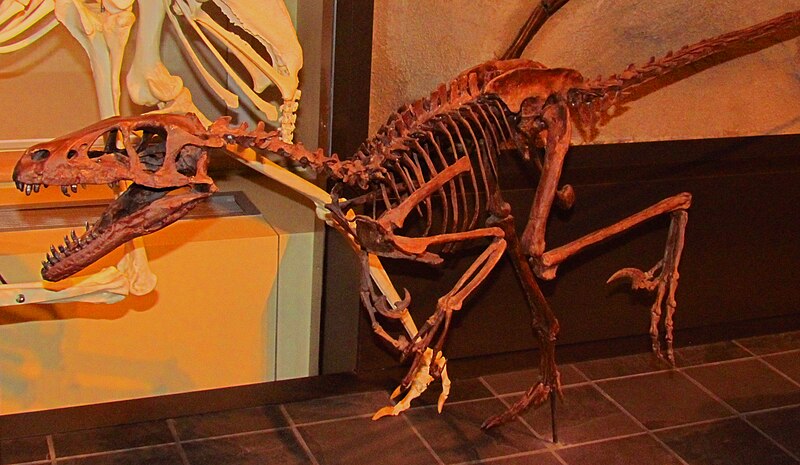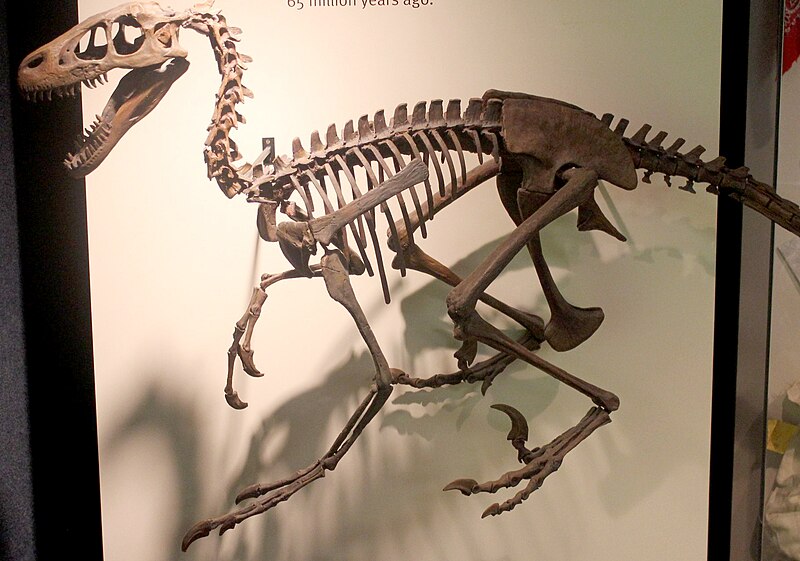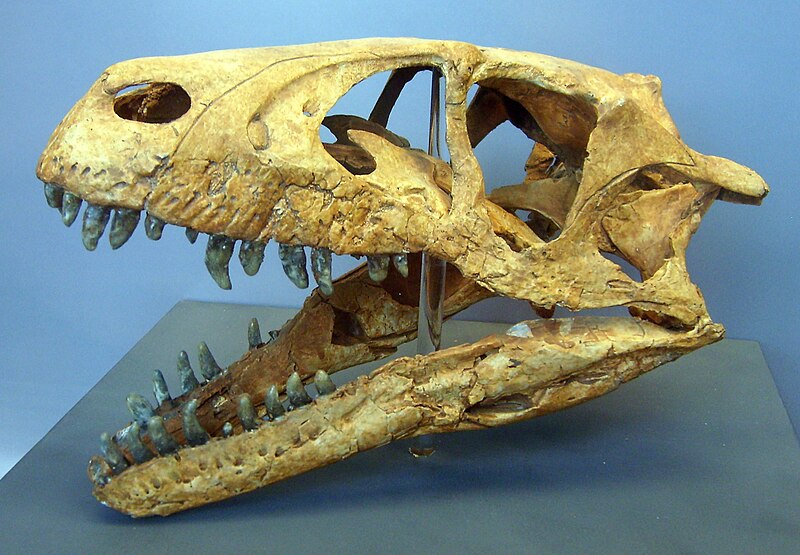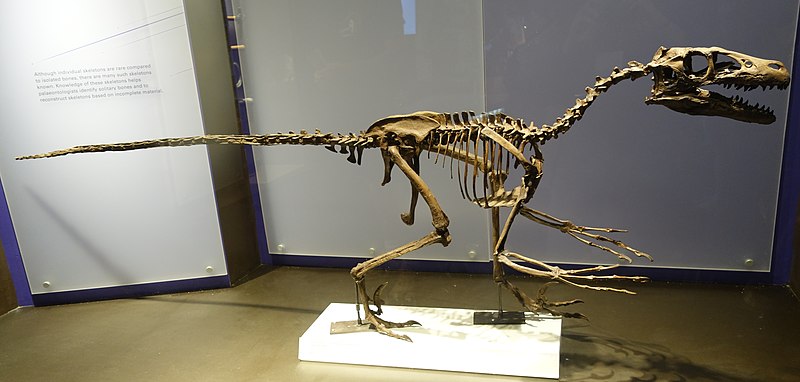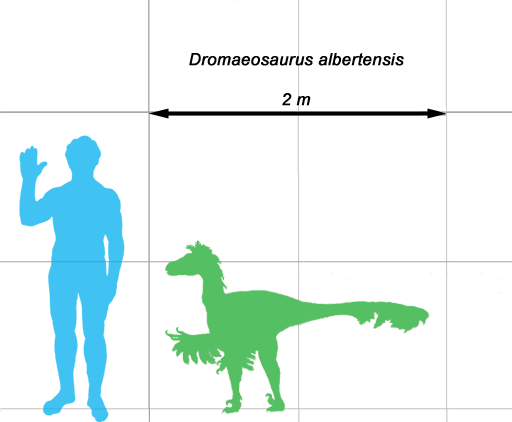Dromaeosaurus, a name that conjures images of speed and agility, was a remarkable predator from the Late Cretaceous Period. Its discovery has provided significant insights into the world of theropods, a group known for their carnivorous habits and formidable hunting skills. This dinosaur, with its distinct characteristics, played a unique role in the ecosystems of its time, showcasing the diversity and complexity of prehistoric life.
As we explore the fascinating world of Dromaeosaurus, we delve into its physical attributes, behaviors, and the environment in which it thrived. This journey not only highlights the dinosaur’s intriguing aspects but also sheds light on the broader picture of life millions of years ago.
Dromaeosaurus Key Facts
| Keyword | Fact |
|---|---|
| Pronunciation | drom-ee-oh-saw-russ |
| Meaning of name | Running Lizard |
| Group | Theropoda |
| Family | Dromaeosauridae |
| Type Species | Dromaeosaurus albertensis |
| Subspecies | Dromaeosaurus explanatus |
| Diet | Carnivore |
| When it Lived | 76-69 Ma |
| Period | Late Cretaceous |
| Epoch | Campanian-Maastrichtian |
| Length | 6.6 feet |
| Height | Approximately 2.6 feet |
| Weight | 35.0 pounds |
| Mobility | Moved on two legs |
| First Discovery | 1914 by Paleontologist Barnum Brown |
| Described by | 1922 by William Diller Matthew and Barnum Brown |
| Holotype | AMNH 5356 |
| Location of first find | Dinosaur Park Formation, Alberta, Canada |
| Also found in | Montana |
Dromaeosaurus Origins, Taxonomy and Timeline
The etymology of Dromaeosaurus, deriving from the Greek words for ‘runner’ and ‘lizard,’ aptly describes this agile predator. As a member of the dromaeosaurid family, it represents a group known for their speed and hunting prowess. The type species, Dromaeosaurus albertensis, along with the subspecies Dromaeosaurus explanatus, offers a fascinating glimpse into the world of these swift predators.
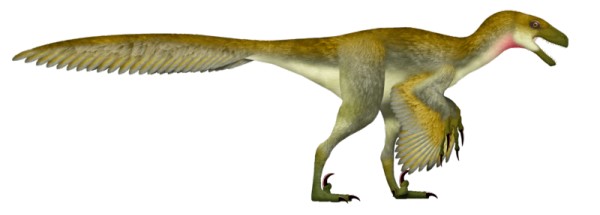
Dromaeosaurus lived during a pivotal time in the Late Cretaceous, specifically during the Campanian-Maastrichtian. This period, ranging from 76 to 69 million years ago, was an era of significant diversification and evolution among theropods, with Dromaeosaurus playing a vital role in this dynamic landscape.
Listen to Pronunciation
To listen to the correct pronunciation of this dino’s name, check out this How To Say Dromaeosaurus
Discovery & Fossil Evidence
In 1914, the discovery of Dromaeosaurus in Alberta, Canada, marked a significant addition to our understanding of Cretaceous theropods. Paleontologist Barnum Brown’s discovery opened a new chapter in the study of these ancient creatures.
The formal description of Dromaeosaurus by William Diller Matthew and Barnum Brown in 1922 provided detailed insights into its physical characteristics and possible behaviors. The holotype specimen, AMNH 5356, has been a key piece in reconstructing the image of this dinosaur.
Subsequent finds in Montana, USA, have indicated a wider distribution of Dromaeosaurus. These findings have enriched our understanding of its habitat range and ecological adaptations.
- Reconstructed skeleton, Canadian Museum of Nature
- Dromaeosaurus feet.
- Dromaeosaurus skull
- Dromaeosaurus skeleton. Behind is a skeleton of a crocodylian, and above it a skeleton of (possibly) Compsognathus.
- Dromaeosaurus albertensis, Canadian Museum of Nature, Ottawa, Ontario, Canada
- Skeleton of a Dromaeosaurus
- Dromaeosaurus skull cast, Geological museum, Copenhagen.
- Skeletal reconstruction of Dromaeosaurus albertensis Dinosaur. Dinosaur Park Formation, Dinosaur Provincial Park, Alberta. On display at the Royal Tyrrell Museum, Alberta, Canada.
Dromaeosaurus Size and Description
In the realm of the Late Cretaceous, Dromaeosaurus emerged as a distinctive figure, not for its size but for its formidable hunting capabilities. This medium-sized carnivore, while not the largest in its ecosystem, was an embodiment of agility and predatory efficiency.
Short description of Dromaeosaurus
Dromaeosaurus was characterized by a robust and deep snouted skull, a physical trait that distinguished it among theropods. The most striking features of this dinosaur were its sharp, conically shaped teeth coated with enamel and the notorious “sickle claw” on each foot, indicative of its predatory lifestyle. Furthermore, its skull anatomy, including a shallow Meckelian groove and a distinct vena capitis dorsalis, points to specialized adaptations for hunting and feeding.
Size and Weight of Type Species
With a body length of about 6.6 feet and weighing around 35.0 pounds, Dromaeosaurus was on the smaller end of the theropod size spectrum, but was built for swift and agile movements. Despite its modest size, it was likely a formidable predator, using its agility and anatomical adaptations to compensate for its lack of sheer mass. The dinosaur’s compact and muscular build, coupled with its sharp teeth and claws, made it well-suited for a predatory role in its habitat.
In its Late Cretaceous context, Dromaeosaurus’s size and weight would have been advantageous in hunting smaller prey and maneuvering through dense vegetation or rugged terrain. Its physical attributes reflect a life of predation, highlighting the diverse strategies employed by theropods to dominate their ecological niches.
The Dinosaur in Detail
Dromaeosaurus, a medium-sized carnivore from the Late Cretaceous, displayed several unique anatomical features that set it apart from its relatives and other contemporary dinosaurs. The distinct characteristics of this theropod were not only adaptations for survival but also indicators of its predatory lifestyle.
Firstly, Dromaeosaurus differed notably in its cranial structure. Unlike many of its relatives, it possessed a short, yet massive skull and a deep mandible, equipped with robust teeth. This skull structure, coupled with heavily worn teeth, suggests a diet that involved more than just slicing through flesh. Instead, its jaws were likely used for crushing and tearing, implying a feeding behavior that relied heavily on the strength of its bite. Indeed, studies have estimated that Dromaeosaurus’ bite force was nearly three times as powerful as that of Velociraptor, indicating that it may have depended more on its jaws than the iconic sickle claw to subdue prey.
Feeding habits
The theropod’s feeding habits, closely studied by researchers, revealed a “puncture and pull” method typical of coelurosaurian theropods. This technique, reflected in the wear patterns of Dromaeosaurus’ teeth, shares similarities with those observed in the Tyrannosauridae and Troodontidae families. Interestingly, micro-wear on its teeth indicated a preference for larger prey compared to the smaller, more delicate troodontids, suggesting an ecological niche where Dromaeosaurus could coexist with these other predators. This ability to tackle larger and potentially struggling prey also aligned it closely with the feeding strategies of larger theropods like Gorgosaurus, further illustrating its role as a formidable predator.
Finally, the dietary analysis of Dromaeosaurus, including the inclusion of bone in its diet, underlines its adaptability and effectiveness as a hunter. Its jaw strength and feeding methods demonstrate an evolutionary path divergent from other maniraptorans, allowing it to thrive in diverse environments and hunt a variety of prey. These distinct features of Dromaeosaurus not only highlight its uniqueness among theropods but also contribute significantly to our understanding of the diverse predatory strategies that existed among the dinosaurs.
Contemporary Dinosaurs
In the Late Cretaceous Period, the land that is now eastern Montana was a stage for an incredible drama of survival, featuring Dromaeosaurus and its contemporaries. These magnificent creatures, each with their distinct characteristics, played specific roles in the complex ecosystem of their time.
Amid the diverse landscape, dominated by fluvial and lacustrine deposits, Dromaeosaurus shared its habitat with the formidable Tyrannosaurus. While Tyrannosaurus was larger and more powerful, Dromaeosaurus, with its agility and cunning, may have scavenged from the former’s kills or competed for similar prey. The interactions between these two predators would have been a fascinating display of the balance between size and agility in the world of carnivorous dinosaurs.
In this Cretaceous realm, herbivorous giants like Triceratops roamed as well. The presence of these massive herbivores provided potential prey for the smaller but agile Dromaeosaurus. However, the defensive attributes of Triceratops, such as its formidable horns and frill, would have made it a challenging target, perhaps leading to tactical hunting approaches or scavenging by Dromaeosaurus.
Edmontosaurus and Ankylosaurus
Another contemporary, Edmontosaurus, with its duck-billed appearance, grazed the landscape. The interaction between Dromaeosaurus and Edmontosaurus would likely have been predator-prey, with Dromaeosaurus possibly preying on the young or weak members of Edmontosaurus herds. The coexistence of these two species highlights the predator-prey dynamics that were a crucial aspect of their ecosystem’s balance.
Completing this prehistoric tableau was Ankylosaurus, an armored herbivore. While not a direct competitor for resources, the presence of Ankylosaurus added to the ecological diversity Dromaeosaurus navigated daily. The armored dinosaur’s formidable defenses would have deterred most predators, including the swift Dromaeosaurus, showcasing the variety of survival strategies that evolved during this period.

Each of these dinosaurs, from the towering Tyrannosaurus to the armored Ankylosaurus, played a role in shaping the Late Cretaceous environment of eastern Montana. Their interactions, whether as competitors, predators, or simply co-inhabitants, contributed to the dynamic and ever-changing tapestry of life in the age of dinosaurs, with Dromaeosaurus being an integral part of this fascinating period.
Interesting Points about Dromaeosaurus
- Type Genus Significance: Dromaeosaurus holds a prestigious place in paleontology as the type genus of both Dromaeosauridae and Dromaeosaurinae, pivotal groups that include many genera sharing similar characteristics to Dromaeosaurus, such as Dakotaraptor.
- Robust Hunter: Notably different from most of its relatives, Dromaeosaurus had a short, massive skull and deep mandible, with robust teeth that were more heavily worn than those of its relative Saurornitholestes. This suggests a powerful bite force, nearly three times as powerful as Velociraptor’s, focusing on crushing and tearing rather than slicing through flesh.
- Diurnal Predator: In a comparative study with Shuvuuia and Alioramus, Dromaeosaurus was identified as a diurnal predator, indicating a daytime active lifestyle that differentiated it from other predatory dinosaurs.
- Unique Feeding Behavior: Studies on Dromaeosaurus’ teeth wear patterns revealed a “puncture and pull” feeding method typical of coelurosaurian theropods. Its preference for larger prey items differentiated its diet from the troodontids in its environment, allowing coexistence with other maniraptoran relatives.
- Rare but Significant Fossil Record: Despite being poorly known from actual fossils and often overshadowed by newer discoveries, Dromaeosaurus was the first dromaeosaurid with reasonably good cranial material described, marking a significant milestone in the understanding of theropod dinosaurs.
Dromaeosaurus in its Natural Habitat
Dromaeosaurus, a Late Cretaceous inhabitant, thrived in an environment characterized by diverse geological formations and dynamic ecological conditions. Its habitat, primarily located along the Fort Peck Reservoir in eastern Montana, presents a vivid picture of the world in which this agile predator lived.
Geological Context of Eastern Montana
The region where Dromaeosaurus roamed was marked by a sequence of Late Cretaceous strata, including the Bearpaw, Fox Hills, and notably, the Hell Creek Formations. These formations, key to understanding the habitat of Dromaeosaurus, were the result of the final regression of the Western Interior Seaway, a significant geological event that shaped the landscape of eastern Montana and the western Dakotas. This withdrawal of the seaway led to the exposure of land that would become the hunting grounds for Dromaeosaurus and other contemporary species.
The Hell Creek Formation: A Diverse Ecosystem
The Hell Creek Formation, in particular, played a crucial role in defining the natural habitat of Dromaeosaurus. Comprising interbedded sandstones, mudstones, and siltstones, it painted a picture of an environment dominated by fluvial, overbank, and lacustrine deposition. This varied sedimentology indicates a landscape with rivers, floodplains, and lakes, offering a rich and diverse ecosystem for Dromaeosaurus to navigate.
Sediment Provenance and Deposition Patterns
The provenance of the sediments in this area is traced back to the Sevier uplifts to the west and northwest, indicating a dynamic geological history. The Hell Creek sediments, deposited as a prograding clastic wedge, formed over a period of 2.5 million years, continually reshaping the environment in which Dromaeosaurus lived. This constant change in the landscape would have provided a range of ecological niches and diverse prey for this predator, challenging Dromaeosaurus to adapt and thrive in a world of perpetual transformation.
In this context, the habitat of Dromaeosaurus was not just a backdrop but an active player in its survival and evolution. The interplay between the dynamic geological processes and the biological needs of this predator highlights the intricate balance of life in the Late Cretaceous.
Frequently Asked Questions
It was first discovered in Alberta, Canada, in 1914.
Dromaeosaurus lived during the Late Cretaceous Period, from 76 to 69 million years ago.
It is a Theropoda, specifically belonging to the Dromaeosauridae.
Its agility and speed, as suggested by its name, make it a unique theropod.
Dromaeosaurus was a carnivore, preying on smaller animals.
Sources
The information in this article is based on various sources, drawing on scientific research, fossil evidence, and expert analysis. The aim is to provide a comprehensive and accurate overview of Dromaeosaurus. However, please be aware that our understanding of dinosaurs and their world is constantly evolving as new discoveries are made.
Article last fact checked: Joey Arboleda, 03-12-2024
Featured Image Credit: Fred Wierum, CC BY-SA 4.0, via Wikimedia Commons

